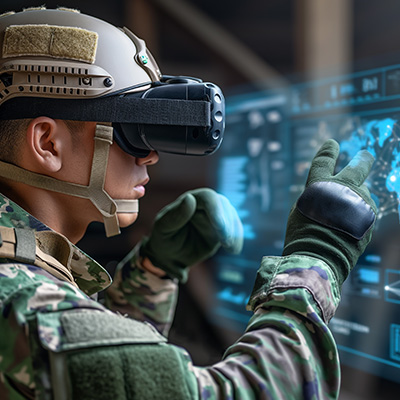Military training has long relied on physical drills, tactical simulations, and live exercises to prepare personnel for real-world combat. But as global threats become more complex and technology continues to evolve, traditional methods are no longer sufficient. Virtual reality (VR), a transformative tool reshaping how modern armed forces train, strategize, and scale readiness from individual squads to entire military services.
The implementation of virtual reality military training offers an immersive experience that is important for developing soldiers’ skills in high-pressure and dangerous situations. By donning VR headsets, military personnel can be transported to life-like environments where they can practice combat, medical procedures, or vehicle operations without the real-world consequences.
Why VR Matters in Modern Defense
The military’s mission is clear: prepare soldiers for unpredictable, high-stress environments. VR makes this mission more achievable. It enables the simulation of dangerous scenarios such as urban warfare, aircraft failure, and hostage rescue, without exposing personnel to real-world risks. This not only ensures safety during training but also enhances psychological preparedness.
Moreover, VR helps address budgetary and logistical constraints. With fewer resources needed for travel, ammunition, or physical replicas, militaries can stretch training budgets while maintaining intensity. By digitizing exercises, it also allows for greater customization, instant feedback, and repeatability, critical to learning complex skills efficiently.
Application of Military VR Training
There has been a significant advancement in military training, offering immersive experiences that enhance soldier performance and tactical readiness. These state-of-the-art systems are tailored for different branches of the armed forces, with training modules designed around specific operational goals and instructional methodologies.
Air Force Pilot Training
VR for Air Force pilot training is changing the traditional cockpit learning environment. VR programmes in military combat provide highly realistic flight simulations, where pilots can experience an airborne scene without the real risks and costs associated with the actual flight. VR also aids in taking frequent training sessions and the ability to simulate a wide range of conditions and simulations that are challenging.
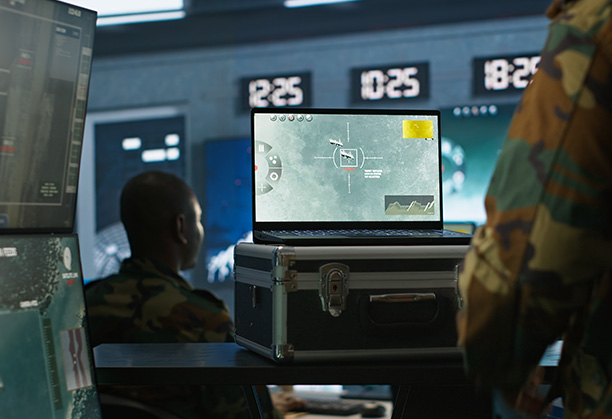
Battlefield Simulations
Battlefield simulations via VR prepare soldiers for real-world combat situations by providing a controlled and versatile environment. VR allows troops to train in detailed, simulated terrains that mirror potential combat zones, greatly improving their spatial awareness and decision-making under pressure.
Medical and First Aid Preparedness
In the realm of medical and first aid preparedness, VR is proving to be of great significance for the medics. These virtual environments offer the opportunity to practise life-saving procedures in trauma-based situations. This approach of training is enhancing the readiness of the military medical personnel, ensuring that they can respond with confidence and, more importantly, with precision in any situation.
Mission Rehearsal and Strategy
Talking about mission rehearsal and strategy, VR enables military units to visualise and rehearse operations before deployment. These immersive VR training simulations provide an interactive platform for practising various strategies, allowing troops to analyse and refine tactics in a dynamic, risk-free setting.
Through repeated rehearsals of mission-critical tasks and procedures, units can identify potential challenges and find solutions in advance of real-world execution.
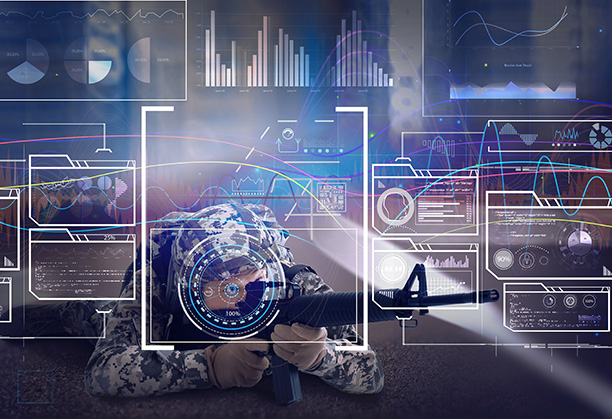
Benefits of VR in Military Training
Virtual Reality training offers the military innovative solutions to simulate real-world environments and scenarios. Through immersive learning vr, military personnel can enhance skill sets while ensuring safety and reducing costs.
Enhanced Realism
VR is allowing military personnel to train in highly realistic battlefield scenarios. Many systems are replicating complex environments and situations with great precision, enabling soldiers to train for actual combat without the real-world risks.
Improved Safety
VR establishes safe training grounds. There is a significant reduction in risk for injury or even death as service members can learn to navigate dangerous situations within a controlled, virtual space.
Cost-Effectiveness
The use of VR also presents an opportunity for cost savings. Virtual environments mean less reliance on physical assets and locations, which are expensive to maintain and secure. Investing in VR leads to long-term savings.
Measurable Competence
Virtual reality training provides quantifiable evidence of a soldier’s skills and adaptability. It allows for the collection of data on performance, measuring and demonstrating competence in a variety of training modules, which can be essential for targeted improvements.
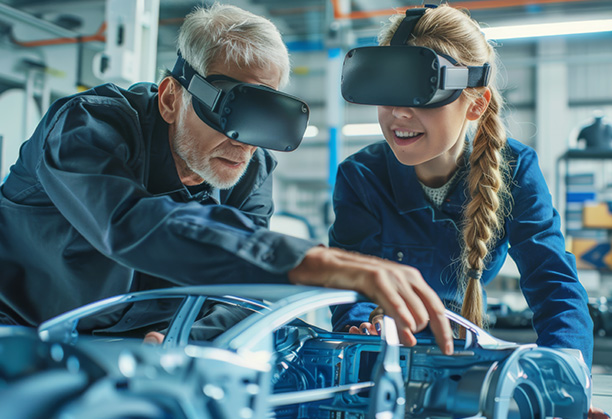
Challenges in Scaling VR Military
While VR provides dynamic training opportunities for the military, several challenges and limitations can affect its effectiveness and wide-scale implementation.
Technical Barriers
In military training, technical hurdles are very significant. Hardware issues, such as limited battery life and latency, can hamper the realism and immersion crucial for effective training. Creating training modules is complex and resource-intensive, often requiring extensive programming and 3D modelling. These systems must also be robust enough to withstand diverse and harsh operational environments faced by military personnel.
Physical and Psychological Adaptation
Prolonged use of VR equipment can cause side effects like motion sickness, eye strain, and discomfort among the trainees. Furthermore, there’s a risk that prolonged immersion might lead to a blurring of lines between virtual and real combat scenarios. This necessitates careful consideration of how VR is introduced and the frequency of its use, to prevent any negative psychological impact.
Integration with Traditional Training
Combining VR with conventional methods poses its challenges; finding the correct balance is crucial. Traditional training has been honed for decades and integrates nuances of real-world physics and social dynamics that VR hasn’t fully replicated. And more evidently there is a lot of scepticism amongst military trainers towards the effectiveness of VR means that it must demonstrate tangible benefits to be embraced as a complementary training tool.
Future Trends in VR Military Training
Adoption of AI Technologies
Virtual Reality is being combined with Artificial Intelligence to create more dynamic and responsive training scenarios. For instance, soldiers can experience realistic and unpredictable combat situations where the AI adapts the mission and environment in real-time, providing a tailored training experience that improves decision-making skills under stress.
Multi-User Virtual Environments
Multi-user virtual environments are becoming a crucial trend in military training, allowing multiple participants to train simultaneously in a shared digital space. Teams can practice complex collaborative tasks, such as tactical manoeuvres or coordinated assaults, fostering unit cohesion and operational preparedness.
Hardware Advancements
Advancements in VR hardware are providing soldiers with more lightweight and comfortable headsets, coupled with better haptic feedback systems. These developments aim to enhance physical fidelity and reduce training-related fatigue, enabling longer and more frequent training sessions without compromising the quality or intensity of the experience.
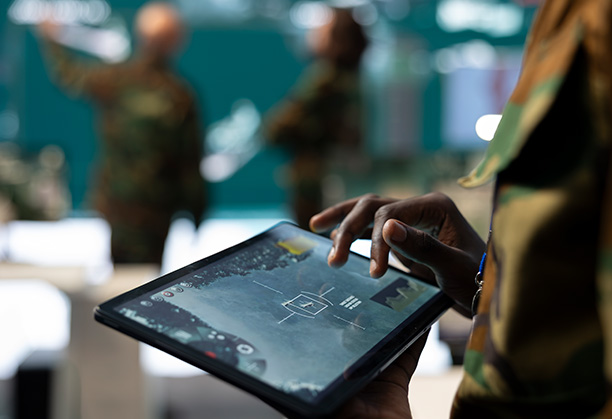
Ready for risk-free military training?
Juego neXR: VR Solutions for Military Training
At Juego neXR, we develop high-fidelity virtual reality training environments tailored for modern military demands. Our VR solutions simulate diverse scenarios, from cockpit procedures and battlefield tactics to trauma care and mission rehearsals, offering realistic, repeatable, and immersive training without real-world risks.
By integrating dynamic interactivity, real-time analytics, and adaptable mission modules, our training systems boost operational readiness, decision-making accuracy, and unit coordination. Scalable and customizable military-grade VR solutions are built to enhance competence, safety, and cost-efficiency, equipping personnel across forces to train smarter, respond faster, and operate with confidence in any situation.
Conclusion
Virtual Reality is no longer a futuristic concept but a mission-critical asset transforming military training worldwide. From its early use in flight simulation to its current role in immersive battlefield, medical, and mission rehearsal scenarios, VR has evolved into a powerful tool for enhancing preparedness and precision across all branches of defense. With its ability to simulate high-stakes environments safely, cost-effectively, and repeatedly, VR offers measurable improvements in skill acquisition, response times, and strategic thinking.
However, challenges like technical limitations, physical strain, and integration with traditional methods must be addressed for wider adoption. As AI, multi-user systems, and hardware continue to advance, VR will only become more indispensable. It is clear that the future of combat training lies in immersive technology, and VR will lead the charge in shaping smarter, safer, and more resilient armed forces.
Frequently Asked Questions
VR military training integrates head-mounted displays (HMDs), motion tracking, haptics, and spatial audio with a real-time simulation engine. These systems are networked via cloud or local servers to enable synchronized multi-user environments. Data is captured through telemetry and biometric sensors to assess performance metrics and behavior in real time.
Systems are hardened through AES-256 encryption, zero-trust architecture, and secure user authentication layers (LDAP, CAC/PIV card integration). Simulations can include synthetic cyberattacks, red team/blue team training modules, and isolated containers to simulate real-world threat response protocols.
Instructors access real-time dashboards that capture kinematic data, biometric inputs (heart rate, eye tracking), and decision logs. This data is processed using ML algorithms for performance scoring, heatmapping, and behavior prediction, enabling adaptive feedback and skill gap analysis for ongoing optimization.
To minimize motion sickness and psychological stress in VR military training, developers implement optimized frame rates, ergonomic interactions, and gradual exposure techniques. Simulations are designed with customizable comfort settings and cognitive load-balancing to ensure immersive yet safe experiences. Additionally, debriefing modules and real-time monitoring help detect and manage trainee stress, ensuring the training remains effective, engaging, and aligned with both mental and physical readiness standards.
Revolutionize the future of business with Juego neXR
Related Posts
Share this Article:
Our Offices

India
Bangalore
GR Grand Plaza, 2nd Floor, JP Nagar, 6th Phase, Bangalore – 560 078

KSA
Jeddah
St Idris Square, 4036 Helmi Koutbi, Al Zahra, Jeddah 23425, Saudi Arabia
Follow Us On:
© 2025 Juego neXR. All Rights Reserved.
